
As a bass player, it’s easy to assume that all bass strings are pretty much the same.
But the truth is, the strings you choose make an enormous difference in sound and playability, perhaps more-so than on any other instrument.
So in this ultimate guide, you’re going to get a crash-course in all things bass strings, as well as some of our top string recommendations towards the end.
First up…
Finding the Scale Length of Your Bass Guitar
When shopping for strings, the first thing you’ll need to do, is verify the scale length of your instrument.
The scale length is defined as the distance between the string bridge and the nut, as shown in the image below:
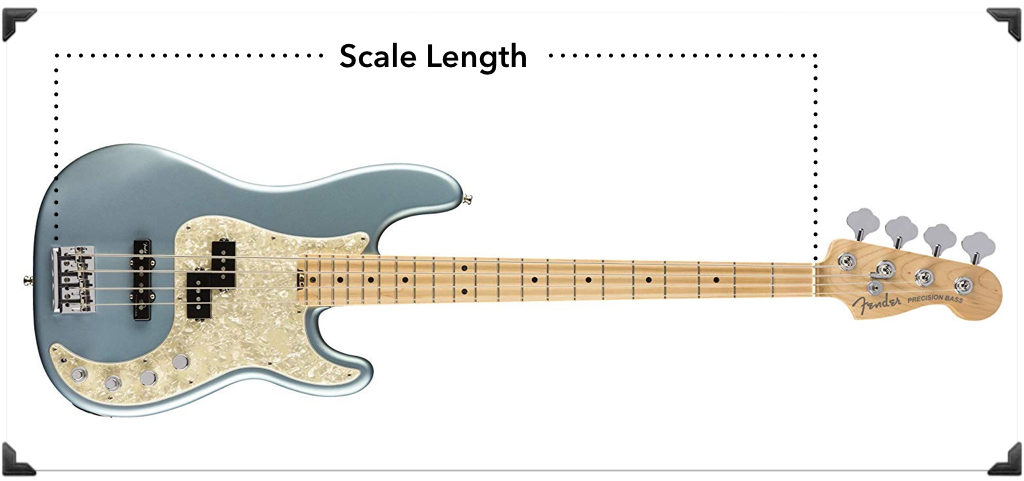
The 3 common lengths are:
- Long Scale 34″ – typical of most 4 string models such as J and P basses
- Extra Long Scale 35″ – typical of most 5 or 6 string basses
- Short scale 30.0/30.5″ – which are only seen on specialty or kids basses
So the strings you eventually buy will need to match 1 of these 3 lengths.
Up next…
Common String Gauges for the Bass Guitar
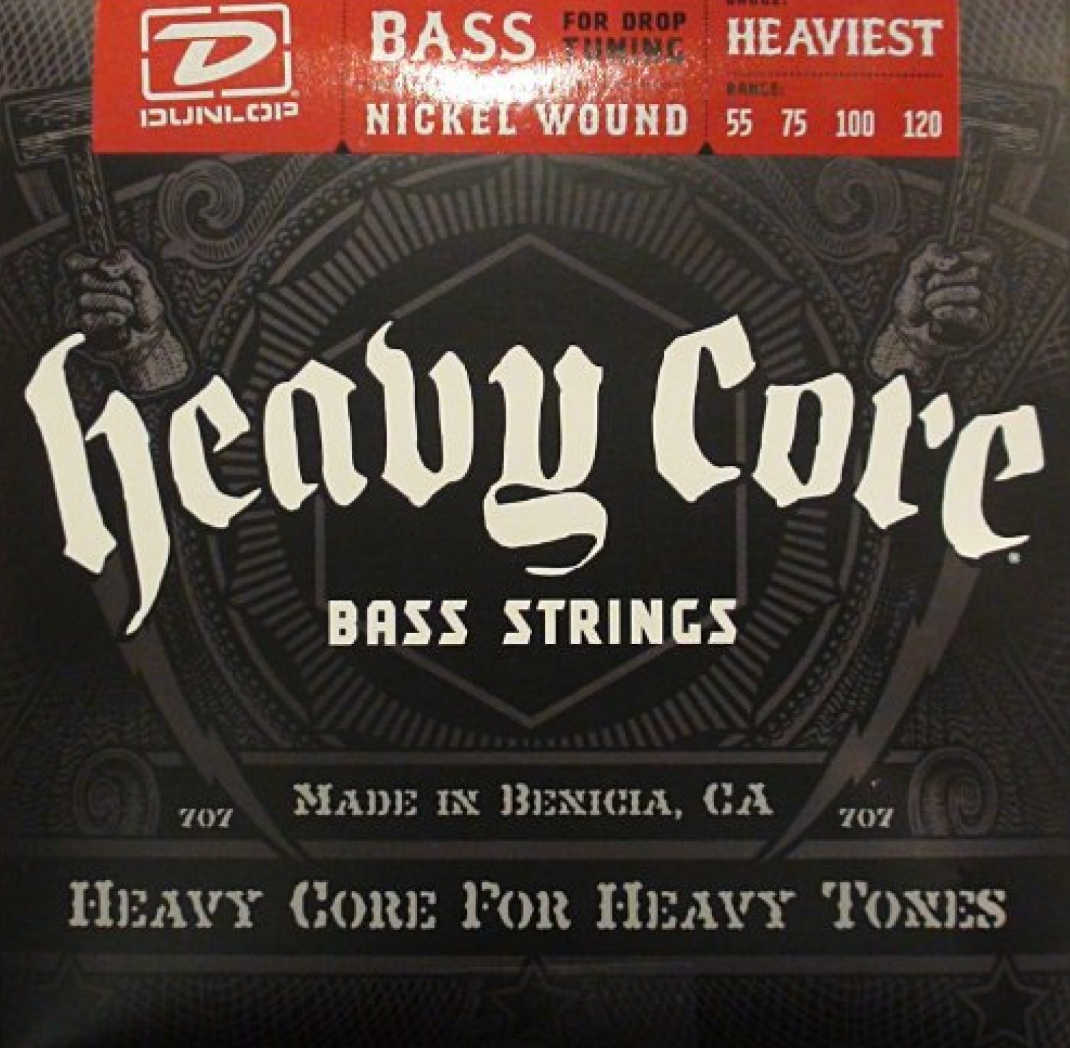
Measured in inches, bass strings sets typically come in one of the following gauges:
- Light – .040/.065/.080/.100
- Medium – .045/.065/.085/.105
- Heavy – .050/.075/.090/.110
- Extra Heavy – .060/.080/.100/.120
And some sets even go as heavy as .125 for the E string, which is ideal for drop tunings.
NOTE: It’s worth noting that these numbers are only guidelines, and string sets often vary between manufacturers.
Some bassists may even buy their strings individually, to suit their preferences.
In regards to sound and performance:
- Higher Gauge Strings – produce more low end and are common in rock/metal.
- Lower Gauge Strings – produce less thump and are common in funk/jazz and slapping.
Typical Examples
- Light gauge
- Medium gauge
- Heavy gauge
- Extra-heavy gauge
Up next…
Hex Cores vs Round Cores: Which is Better for Bass?
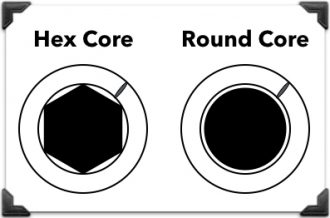
Beneath the outer string winding lies an inner core, which can be either:
- Round Core – which is the original core design, that has a tendency to cause some slippage between core and winding
- Hex Core – which is a newer core design that minimizes slippage by digging into the outer winding, making them better for slapping and tapping.
In the image, you can see how it looks from a cross-section view.
And in terms of sound and performance, here’s how they compare:
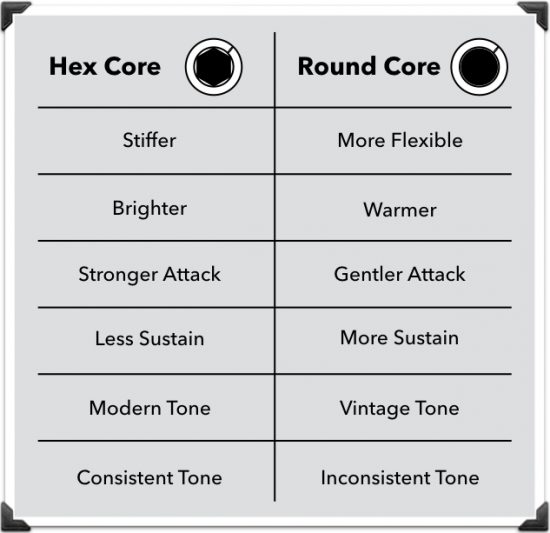
Typical examples:
Up next…
Which Metals Are Best for Bass Strings?
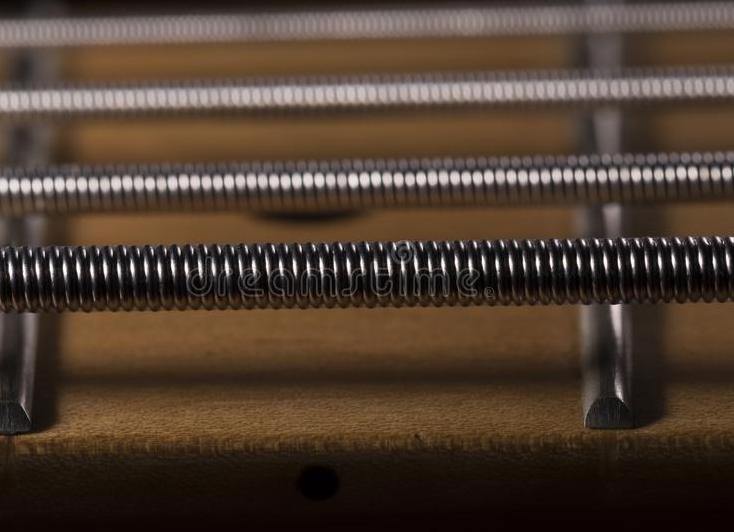
With bass strings, the 4 most common metals are:
- Nickel-Plated Steel – which is most popular, with a good balance of brightness and warmth
- Stainless Steel – which has the brightest tone, the best corrosion resistance, and is ideal for slapping
- Pure Nickel – which has a warmest vintage tone, and is common to funk/jazz and fingerstyle playing
- Copper-plated Steel – which is known to produce lots of overtones and harmonics
If you only have one bass and play in a variety of genres, nickel-plated steel is the obvious choice, as it’s the most versatile of the 4 options.
On the other hand, if you have multiple basses, or only play in one specific style, it generally makes more sense to choose one of the other options best-suited for that genre.
To hear how each of these compare in sound, check out this video:
Typical Examples
- Nickel-Plated Steel
- Stainless Steel
- Pure Nickel
- Copper-plated Steel
- None
Up next…
Roundwound vs Flatwound Strings: What’s the Difference?
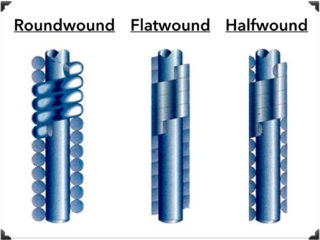
With bass strings, there are 3 categories of winding:
- Flatwound – which was the original string design, with a mellower, rounder sound, popular in jazz, and fretless basses
- Roundwound – which most also popular these days, most versatile, with the brightest sound, sharpest attack, and best for rock/pop/funk, but also wears down frets quicker
- Halfwound (aka groundwound) – which is a mix of the two, manufactured round, but pressed or ground flat on the outside
While you might guess that halfwound strings would be the ideal compromise between roundwound sound and flatwound performance…they’re actually the least popular of the 3, as most players would prefer one extreme or the other.
So I don’t really recommend them, at least not for beginners.
Between roundwound vs flatwound, here’s what you can expect in terms of sound and performance:
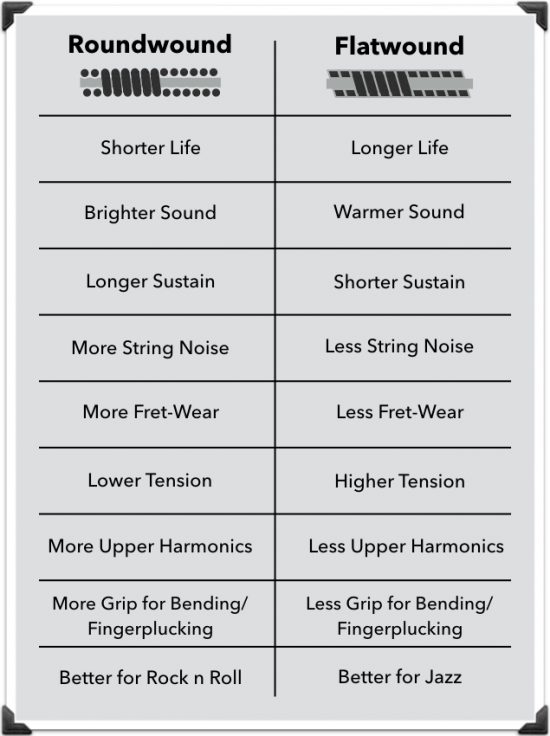
Typical Examples:
Up next…
Recommended Bass String Sets
Now that we pretty much covered every single feature to look for in a string set, the only thing left to do is choose a set.
So here are the links to some recommended sets, organized by the features we just covered:
- Roundwound
- Nickel-Plated Steel
- Stainless Steel
- Flatwound
- Nickel Steel
- Thomastik-Infeld Jazz 4 strings – (Amazon)
- Stainless Steel
- Nickel Steel
Up next…
The Potential Advantages of “Exposed Core” Strings
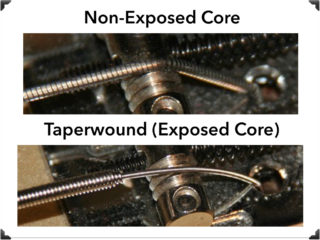
Commonly known as taperwound, this category of string leaves an exposed core on the ends…meaning no winding whatsoever.
According to Fender, this design offers more sustain and better intonation, and a better overall sound.
While this style of strings has yet to reach the mainstream, the small group of bassists who have explored them seem to all agree that they are a significant upgrade from traditional bass strings.
Typical example:
Up next…
Do Coated Strings Work Well on Bass?
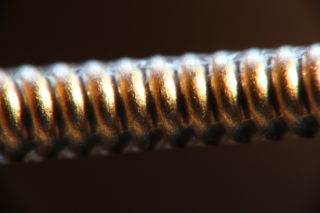
Back in 1997, when Elixir strings first got started, they quickly became an overwhelming sensation in the world of both acoustic and electric guitars.
So it’s no big surprise that since then, that they’ve since expanded their product line to include other stringed instruments as well…including bass.
As you’ll discover the first time you play them, the two major performance advantages of coated strings are:
- A much longer lifespan compared to uncoated strings
- A smoother string feel with less squeaks
In terms of sound, there are significant differences as well, including their ability to block overtones.
If you’re interested, here are some sets to check out:
- Nickel Plated Steel – (Amazon/Thomann)
- Stainless Steel – (Amazon/Thomann)
- Stainless Steel (5 string) – (Amazon/Thomann)
- DR Black Beauties – (Amazon/Thomann)
And to hear what they sound like, check out this video:
By the way, if you found this post useful, I highly recommend joining our free Home Recording Secrets email newsletter where you’ll discover….
- How to Get Your First Studio Up and Running in a Single Weekend
- How to Avoid Wasting Thousands of Dollars on Unnecessary Pointless Purchases
- How to Get a “Million Dollar” Pro Studio Sound in a “Thousand Dollar” Home Studio
- PLUS… All Sorts of Other Amazing Insider Secrets Revealed
And it’s totally FREE! Click here and Enter Your Email to Sign Up.
More Guitar Posts in This Series:
Electric Guitar | Acoustic Guitar | Bass Guitar | Amps | Pedals | Cables | Pickups | Bass Strings | Bass Amps | Bass Pickups | Classical Guitars | Acoustic Pickups | Direct Boxes | Cases | Picks | Slides | Straps | Tuners | Stands | Strings | Capos | Tabs | Guitar Accessories